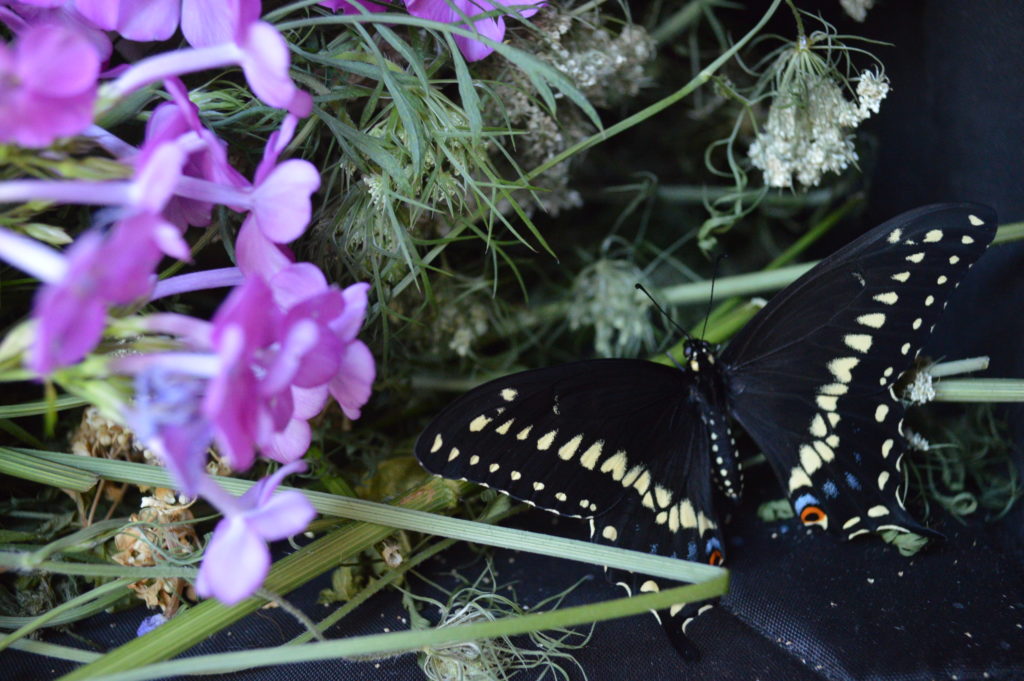
This black swallowtail is shown shortly after emerging from its chrysalis in Cedar Rapids, Iowa. (photo/Cindy Hadish)
Like any proud new mom, I took lots of photos, but time with my “baby” was fleeting.
See the black swallowtail in chrysalis stage.
I was told that butterflies generally emerge from their chrysalis in the morning, so once I had found a swallowtail caterpillar and brought it, in chrysalis stage, onto my back porch, I spent the past several mornings keeping a close eye on the “hatchery,” a converted, never-used pet carrier.
Being the free spirit my black swallowtail appeared to be, though, it decided on mid-afternoon, 10 days after it formed its chrysalis.
The images I hoped to photograph didn’t materialize as I envisioned. Once I opened the pet carrier, my butterfly flew onto the screen of our porch, and the move to the fragrant, just-opened phlox outdoors was even more short-lived.
Rather than nectaring on the flowers, my swallowtail flew off into the wild blue yonder, with an upward velocity I didn’t imagine was possible.
At least I know I “raised” a healthy flier. And, with plentiful Queen Anne’s lace and other flowers that black swallowtails favor, perhaps I will see its return to the backyard where I first found it as a very hungry caterpillar.
Learn the differences between swallowtail and monarch caterpillars and see more images of the backyard black swallowtail, below: (photos © Cindy Hadish/Homegrown Iowan)
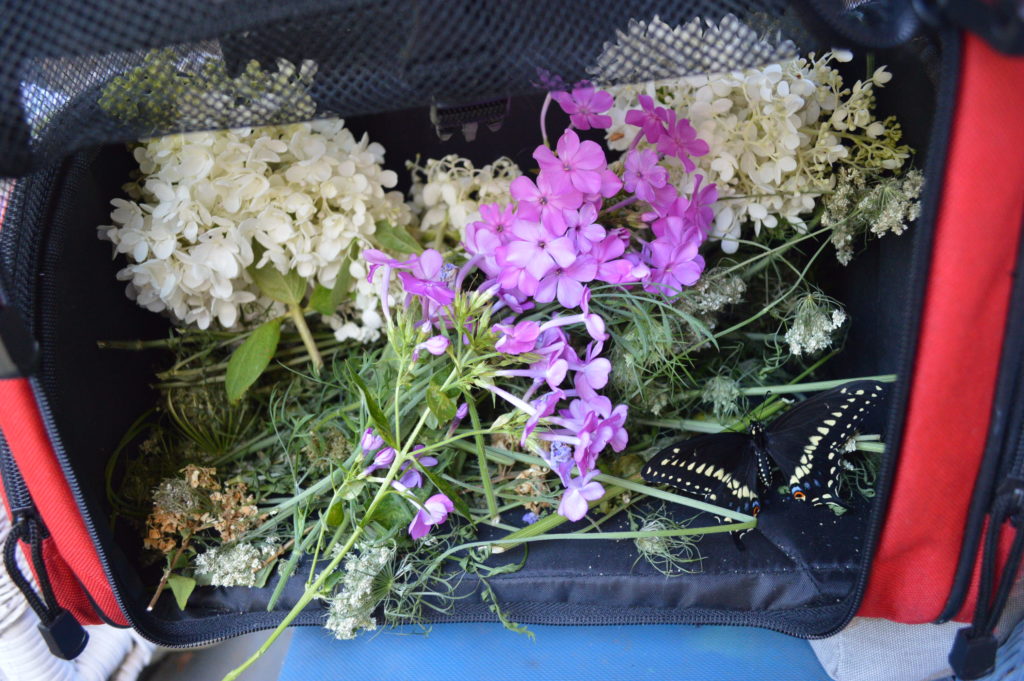
The black swallowtail is shown after the screen is lifted on its enclosure, a converted pet carrier. (photo/Cindy Hadish)
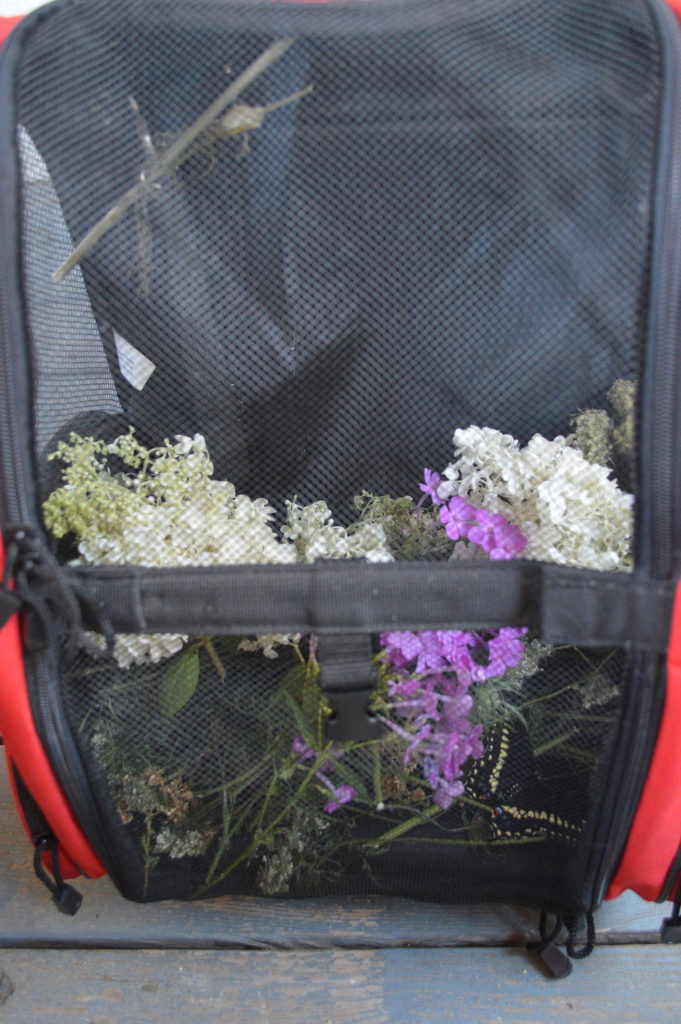
The butterfly emerged from the chrysalis, which was suspended at the top of the pet carrier. (photo/Cindy Hadish)
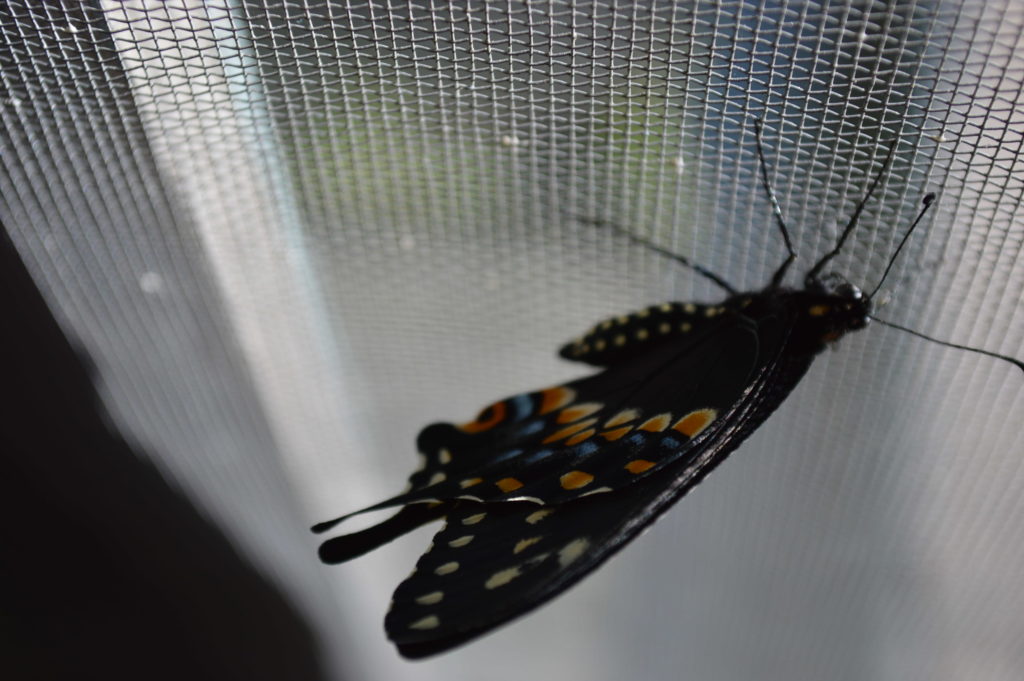
The swallowtail flew onto the screen of the porch shortly after its enclosure was opened. (photo/Cindy Hadish)
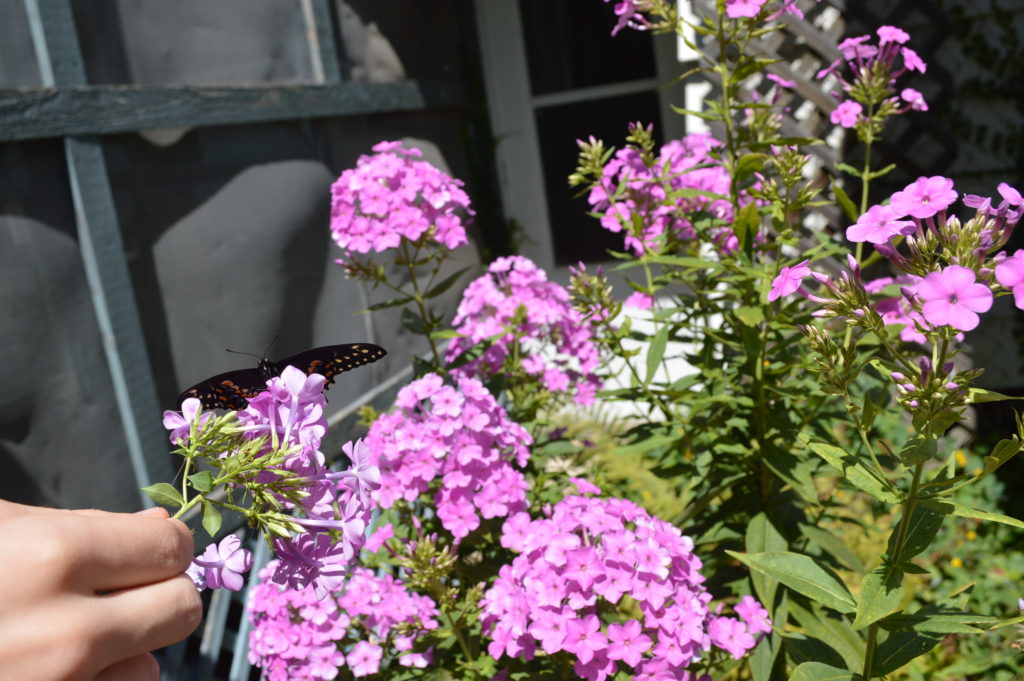
The “dining room” where, it was hoped, the black swallowtail would spend time nectaring outdoors on phlox. (photo/Cindy Hadish)
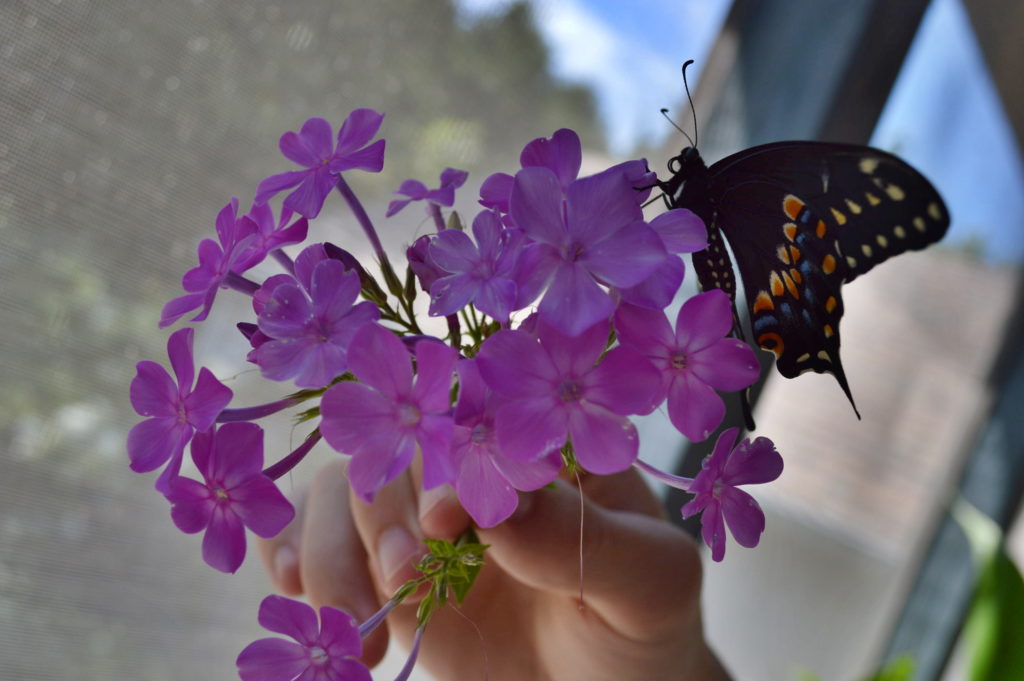
The black swallowtail was carefully moved off the screened-in porch via phlox flowers. (photo/Cindy Hadish)

http://www.babble.com/baby-names/boy-names-that-start-with-g/
Ha! Thanks Alan. I should have a baby name contest!